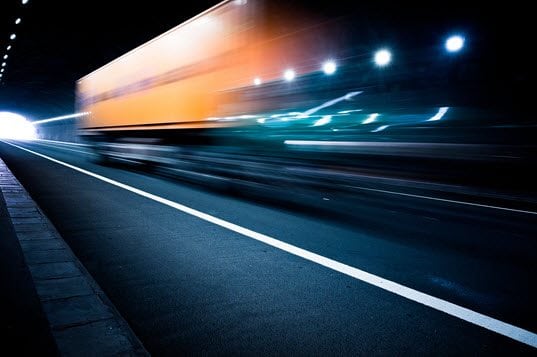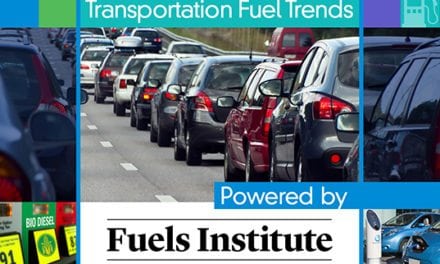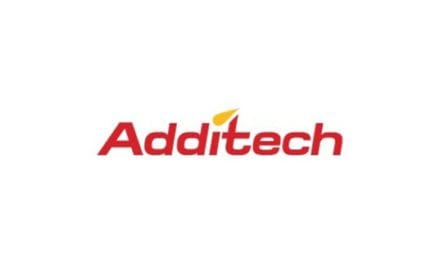By Keith Reid
The Highway Trust Fund was established to support the federal highway infrastructure and additionally provides support for some mass transit initiatives. It is expected to be self-sustaining with some 90% of its funding coming from a federal fuel tax of 18.4 cents per gallon on gasoline and 24.4 cents per gallon on diesel fuel and energy content equivalent taxes on alternative fuels such as CNG. The other 10% comes from taxes related to heavy trucks and tires.
The fuel tax rates have not changed since 1993, but fuel demand has fluctuated during that time and there has been constant inflation. We are currently entering a period where fuel demand has been down and where it is not expected to dramatically increase in the long run because of an international push for greater efficiency in new engine technology and an expansion of the pure electric vehicle market. However, those developments do not decrease actual road traffic and the wear and tear on federal highways.
Since 2001 a shortfall in funding has started to become apparent. The Highway trust fund is not supposed to run a deficit nor is it supposed to be able to be financed through debt. With there being some political aversion to raising fuel taxes, especially when the price of fuel was much higher than it is today, one way to get around that funding limitation was to receive deposits from the general fund (so much for no debt financing) to make up the shortfall. For example, the latest $70 billion injection should hold things until 2020.
A study in 2015 by the Congressional Budget Office projects that by 2026 the cumulative highway shortfall will grow to $80 billion. CBO also projects that the transit account will have a cumulative shortfall totaling $31 billion by 2026.
In a related development, the Trump administration has committed to a large, $1.5 trillion infrastructure plan. This doesn’t specifically address the Highway Trust Fund funding issue but there is significant practical overlap and several funding proposals in that plan directly impact industry retailers in both the convenience and truck stop/travel plaza sectors. These initiatives, commercializing rest areas/rest stops and more flexibility for interstate tolling are linked to a desire by the Trump administration to shift more infrastructure financing back to the states from the federal sector.
Our Highway Infrastructure
It’s debatable just how “crumbling” our current highway infrastructure actually is, but there are clear needs such as bridge repair/maintenance and addressing numerous traffic bottlenecks throughout the country that significantly impact traffic flow. The American Trucking Associations has been pressing the Trump administration aggressively to address current highway infrastructure challenges, with the primary motivation being the costs associated with traffic congestion and road disrepair.
“Our goal is to educate decision makers and the public about the hidden costs of the status quo,” said ATA President and CEO Chris Spear in a public announcement. “If we’re to secure a better future for our country and this economy, then we can no longer put off necessary improvements to our national network of roads and bridges.”
Spear told the House Subcommittee on Highways and Transit of the Committee on Transportation and Infrastructure that motorists spend more than $1,500 each year due to lack of infrastructure investment—$500 spent repairing their vehicles and nearly $1,000 more wasted sitting in traffic. Further, the trucking industry loses more than $63 billion every year because of congestion. “That’s 362,000 truck drivers sitting idle for an entire year,” said Spear. “And as much as we liked the tax cut we got last year, we’re going to give it all back because that $63 billion is like a 9% tax on our industry. These are the costs of doing nothing.”
As for the rest area and tolling proposals, Spear is not a big fan. “While the White House’s plan kick starts this debate, it unfortunately falls short of the President’s campaign promise to go big and bold, because it lacks the required federal investment. A proposal that relies on fake funding schemes like highway tolls and privatizing rest areas will not generate the revenue necessary to make significant infrastructure improvements,” he said.
Commercializing Rest Areas
The debate over commercializing rest areas is not particularly new; in fact, it comes up regularly as budget-pressed states consider revenue options. It is opposed by truck stop and convenience retailers, and the organizations that represent them (NACS, SIGMA, PMAA, NATSO), for some fairly obvious reasons.
“We definitely oppose lifting that ban. We want to keep it the way it is,” said NACS’ director of government relations Paige Anderson. “Our retailers have made business decisions on where they locate their stores based on the current environment and if you allow government sponsored entities access to these rest areas you’re going to see less foot traffic to businesses located on key off ramps throughout the Interstate system. And if they did allow commercializing rest areas, those sites would really have a leg up and we don’t see that as the fair way to go. So we’re hopeful that when the House and Senate start putting pen to paper they won’t include commercializing rest areas.”
One point to consider is that these new locations will not likely provide an opportunity to existing convenience stores or truck stop/travel plaza operators–even the largest players in a region.
“The contracts tend to be awarded to one of maybe three or four multinational companies that specialize in consolidating different franchise arrangements, and these are not local businesses,” said NATSO Vice President of Government Relations David Fialkov. “These are the companies who, for example, run operations with most airports.”
The reason the ban was implements, except for some states that already had commercialized rest areas and were grandfathered in, is familiar to anyone that has seen the Pixar movie Cars. The foundation of that animated feature was the negative impact the Interstate Highway System had on numerous small communities that had previously thrived, but were now bypassed.
“When Congress passed at first Interstate bill back in the fifties the policy makers realized that they that wanted small communities and the businesses located off these highways to have some traffic,” said Anderson. “They realized that the only way that they could do that is to not allow for commercializing rest stops or rest areas. We’ve been working real closely with the League of Cities, because they’re very concerned with local tax revenue being diverted to the states at the expense of the small towns and other communities.”
And the financial rationale is fairly murky. Some degree of additional funding might directly go into state coffers, but for the most part it would simply cutting out the local business that already pay state taxes. It certainly would not increase the total business volume related to highway motorists in a given state.
Another claim is that commercilaization would increase the availability of truck parking. According to NATSO the opposite actually occurs.
“We took a look at the corridors where commercial rest areas are grandfather in and compared those to the corridors that do not have commercial rest areas in those states,” said NATSO Vice President, Public Affairs Tiffany Wlazlowski Neuman. “We found that there was nearly 70% percent more truck parking available on those corridors that do not have commercial rescue areas. I think that’s a really important thing to mention right now just because there are some voices out there that seem to think that commercial rest areas will add new truck parking capacity and it is just is not the case. When truck stops, which provide 90% percent of the truck parking, are unable to compete, they do not have money to invest in truck parking or those businesses potentially fail all together.”
Wlazlowski Neuman cited an additional concern. Current rest areas are served by vending machines. This is currently a niche employment center for the blind that will be harmed by commercialization.
New Tolling
Adding tolling to existing (or new for that matter) highways typically has about the same appeal as an Anthrax sandwich, yet it does represent a potential source of new state revenue that is considered from time to time until public pushback makes it slink away back into the darkness.
For the motorist, the objections become congestion and delay (partially offset by RFID technology), combined with the idea of paying for a road essentially a second time with basically a new tax that historically is used for purposes well beyond highway funding. For convenience store operators and truck stop operators many of the augments mirror those with the commercialization of rest areas.
“We’re open to tolling on new capacity but oppose adding it to existing Interstates for several reasons,” said Wlazlowski Neuman. “Motorists are inclined to divert onto other roads that weren’t necessarily meant to handle the kind of traffic creating safety issues, and as with rest area commercialization they are not then patronizing the established businesses.”
She also pointed out that from a revenue standpoint tolling is highly inefficient, with typically about one-third of the revenue going to administrative costs.
Mileage Tracking
One alternative bandied about, but not being pushed formally so far, is some form of mileage tracking where the motorist pays by the mile. This would probably represent the ultimate in fairness and it would certainly address electric vehicles, but it brings with it a range of practical challenges and big brother concerns.
“There are some legislators that are looking at a vehicle miles traveled type of tax. So regardless of how your vehicles fueled if you’re putting 10 miles on the highway you’re paying for 10 miles,” Anderson said. “But it’s a complicated–how do you keep track of that? In a perfect world that would be the fairest way to do it, because the Highway Trust Fund really is a user fee.”
Increase the Gasoline/Fuel Taxes
In a list of unpleasant options we finally arrive back at increasing the fuels taxs, and most specifically the gasoline component (though some proposals similarly raise diesel and alternative fuels). Although not at the forefront of the administration’s current infrastructure efforts it stands as the most practical option remaining for a problem that will have to be addressed.
While increasing the gasoline tax is another toxic issue with the public, it is perhaps the most viable solution currently. The extreme fuel prices seen just several years ago are likely not to return for some time, barring catastrophic international events. A minor tax increase would not likely generate a tremendous backlash if handled correctly. And there are arguments that could be made that such an increase is in fact overdue.
A New York Times editorial from May of 2017 noted that when adjusted for inflation the value of the federal tax on gasoline has eroded by almost 40% percent since it was enacted in 1993. Similarly, the Concord Coalition noted that: If lawmakers indexed motor fuels taxes to inflation when they were last increased in 1993, the tax on a gallon of gasoline would be roughly 30 cents today, while the tax on diesel would be 39 cents.
As industry expert Joe Petrowski pointed out in a recent Jan. 31, 2018, FMN article, our current tax when adjusted for inflation is actually comparable to the first gas tax of 1 cent in 1932. He predicts: There is little doubt federal tax on gasoline will go to 25 cents/gallon with the following arguments being made: on parity with diesel; only 50% higher in real terms than the 1 cent tax in 1932; lower than 50% of state gasoline taxes; will raise $20 billion per year or 1 trillion over 10 years given the growth in transport fuels (that our government refuses to recognize is over as evidenced by “blend wall” myopia); and, the Federal Reserve will applaud given their concern over the tax bill induced fiscal stimulus as interest rates are rising.
The U.S. Chamber of Commerce has similarly called for a 25-cent, phased-in increase in the federal gas tax to shore up the trust fund.
The Committee for a Responsible Federal Budget recommended that: Lawmakers could close the Highway Trust Fund’s structural imbalance by raising the gas tax 9 cents and then indexing it to inflation (chained CPI), reducing new highway spending by 30% and then indexing it to inflation, enacting some equivalent spending reduction or revenue increase, or some combination.
ATA is promoting its plan, the Build America Fund, which would generate $340 billion through a 20-cent user fee collected on wholesale purchases of motor fuel. “Opponents of a fuel user fee fail to mention a simple fact: deteriorating roads and bridges exact a heavy price on the motoring public – and that cost hits low- and middle-income drivers the hardest,” Spear said in an announcement. “A fuel user fee is completely paid for by users and does not add a penny to the deficit. There’s a reason why Ronald Reagan was such a strong supporter of this policy throughout his presidency.”
Similar support can be found with other industry-facing associations such as NATSO and NACS.
“NACS does not oppose a modest increase as long as those funds go directly to the federal highway system,” said Anderson. “In the past, increasing, the gas tax has been a non-starter. Folks wouldn’t even consider it. The interesting thing is the president himself has said that all ideas are on the table, including increasing the gas tax. We’ll see as negotiations really get underway how serious that thought is.”
Of course we could look at cutting questionable spending out of the Highway Trust Fund. The Heritage Foundation noted that Congress and the states divert roughly 25% percent of the Highway Trust Fund spending to non-highway projects that are not federal priorities. As the foundation stated: The largest of these diversions is the Mass Transit Account, which spent some $8 billion in 2014 on buses, rail, streetcars, and other projects that should fall under the responsibility of municipal or state governments. Other programs include the Transportation Alternatives Program, which spent $820 million in 2014 on undertakings such as sidewalks, bike paths, scenic overlooks, vegetation management, and recreational trails. These diversions sap funds that could be spent on the highway system—the purpose of the highway trust fund—and shortchange the motorists and shippers that pay directly into the system through fuel taxes.
But this is Washington we are talking about, where six-month spending bills are now in the trillion dollar range.









